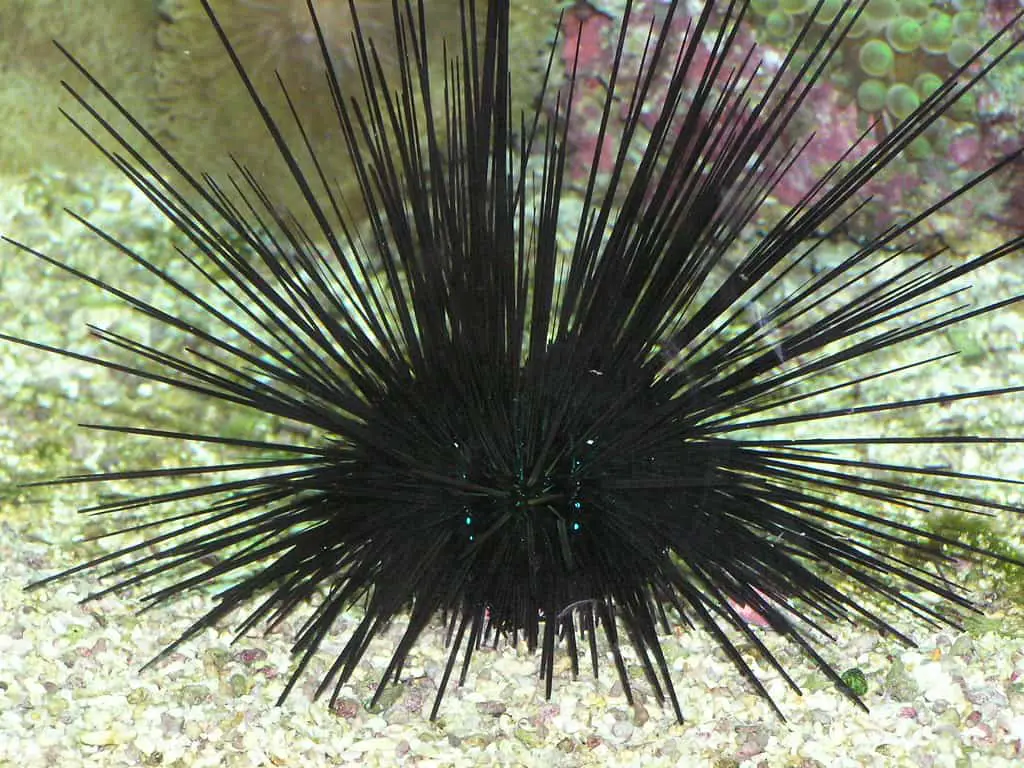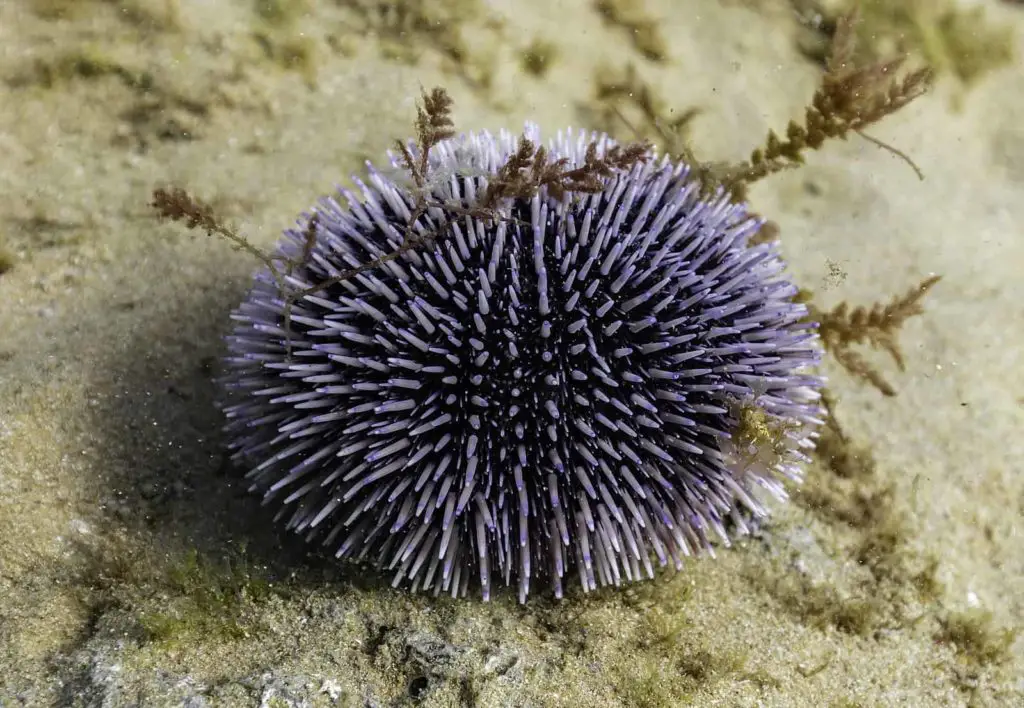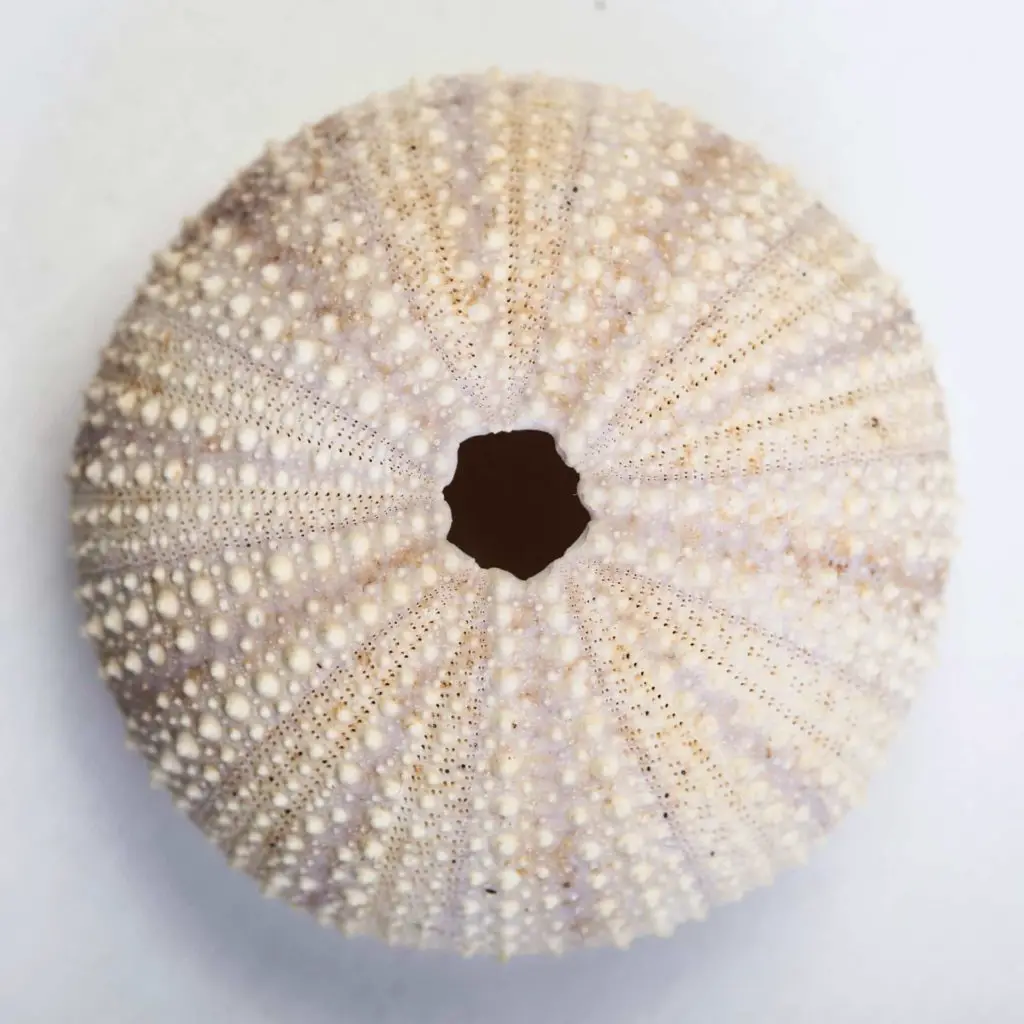Are Sea Urchins Alive? (Explained)
Sea urchins are fascinating marine creatures. Because of their look, most people wonder if they’re actual living animals or how to recognize if the sea urchin’s shell they found is either alive or dead. Sea urchins are classified in the Echinoidea class, which includes the classic sea urchins with spiky spines and sand dollars with very short, harmless spines (you can read more about sand dollars here).
If you wonder whether sea urchins you found are dead or alive, in this post we’ll talk all about that. However, let’s start with a quick answer:
Sea urchins are living creatures and when alive, they have spiky spines all around their body and you can see them moving slowly. Dead sea urchins lose their spines and their skeleton inside becomes empty, and you can find remains of their mouth inside.
However, that certainly doesn’t tell the whole story. Below I’ll explain the difference between a dead and alive sea urchin, what happens to sea urchins when they die, why they die, and how long they live. Furthermore, I’ll explain if you can keep the sea urchin you found, how to preserve it, and what to do if you find a living one. Read on!
The difference between dead and alive sea urchins
Sometimes it’s hard to tell if the sea urchins are still alive or dead. You can identify it by looking at their: spikes, movement, or if their body is detached. Below I’ll explain each of these in detail.
Spines
As you’re probably aware, sea urchins are covered in spiky spines. Their length and color may differ depending on the species. Furthermore, they have shorter spines under their bodies, called tube feet, which help them move around the ocean floor. They lose them after they die, so this is the simplest way to identify whether they’re alive or dead.



If the sea urchin you found is bold, it’s most likely dead. If the spikes are still there but loose, the animal is probably dying, and the spikes will fall off very soon.
Movement
Sea urchins, when alive, use their spines to protect themselves. It may be hard to notice, but they’re constantly moving. They move them because they want to directly point them at predators. When shadows pass over, they react and point at the potential danger with a rate of about 1-2 inches (2.5-5 cm ) per minute.
The movement is very slow but if you look carefully and see the spikes moving, the sea urchin is alive.
Detached body
Sea urchins look entirely different inside than we know them from their outside look. Their external body is built from – what we mostly see – the hard outer skeleton (called test). However, the inside body is soft and houses the digestive, feeding, reproductive, and other organs.
When you grab a sea urchin and its soft parts detach from the test underside of its body, it’s definitely a dead sea urchin. You may also find the lose parts that are remains of their mouth.
If by any chance you collected a living sea urchin, make sure you return it gently to the ocean.
What happens to sea urchins after they die?
As you already know, after sea urchins die, their spines stop moving and eventually fall off. Their inner body falls off and leaves only their skeleton (called test).
But as every living organism – they serve their purpose in our ecosystem. Sea urchins eat algae, plankton, kelp, periwinkles, and sometimes barnacles and mussels. They also are a food source for predators like fish species, crabs, lobsters, sea stars, and more.
It means that even after their death, they provide an essential source for our oceans – calcium carbonate. Eventually, this source, combined with seawater, helps other animals and plants to build their shells. It’s important to know that every organism is an integral part of our ecosystem, and it’s always better to leave them where they were found.
Why do sea urchins die?
Even though sea urchins’ spines provide great protection, there are a few things that may cause their death. The main reasons that sea urchins die are predators, diseases, or water quality.
There are predators for which sea urchins spines are not a problem. This includes shellfish like crabs or lobsters. Triggerfish and wrasse are two fish that prey on them as well. They have big mouths and sharp teeth so that they can bite the test. Usually, they turn the sea urchin upside down to reach the edible parts of its body. Other predators are eels, sea otters, birds, or even foxes.
The following reason why sea urchins die is the diseases. One of the most prevalent diseases is called “Bald Sea Urchin Disease.” The infected areas of the sea urchin’s body turn green, and spines fall off. If the infection covers less than 30% of its body, the animal tends to survive. However, it’s still a much easier prey for its predators. If the disease spreads more extensively, it may be fatal for sea urchins and cause death.
The water quality is the next reason for sea urchins’ death. Sea urchins thrive under specific environmental conditions that include proper water salinity and PH. Water with many pollutants and global warming (higher water temperature) can also cause the death of sea urchins.
How long do sea urchins live for?
We used to believe that sea urchins lived for about 15 years. However, the new techniques of determining sea urchin ages showed that the red sea urchin could live to be 100 years old, or even 200 years and more! This classifies them to be one of the oldest living animals on Earth.

The marine zoologist Thomas Ebert says “No animal lives forever, but these red sea urchins appear to be practically immortal. They can die from attacks by predators, specific diseases, or being harvested by fishermen. But even then they show very few signs of age. The evidence suggests that a 100-year-old red sea urchin is just as apt to live another year, or reproduce, as a 10-year-old sea urchin.”
Can I touch a dead sea urchin?
It may sound surprising, but a dead sea urchin can still sting you. They have toxins in their spines and another organ called pedicellaria. If you touch and stab yourself by the spines, you’ll feel a painful sting-like reaction, but the pain is short-lived. If you want to collect dead sea urchins skeletons, it’s best if they already don’t have any spines or are very dried out.
However, it’s worth knowing that some people may develop an allergic reaction to their toxins. In this case, the sting can be potentially fatal and require medical attention.
Can I keep a dead sea urchin?
If you found a dead sea urchin on the beach and are wondering if you can keep it, below I’ll explain if it’s legal to keep them and how to preserve their shells after taking them home.
Is it legal to keep a sea urchin?
Before you decide to keep a sea urchin, be 100 percent sure that this is no longer a living animal. It is legal to harvest them for recreational fishermen, but the number may be restricted depending on the region.
Most of the time, taking dead sea urchins is legal but it’s good to check if there are any signs on the beach or ask employees who work there. Sometimes there are restrictions about the number of animals’ shells you can collect in one day.
How to preserve a dead sand dollar at home
If you’ve decided to keep a dead sea urchin that you found on the beach, cleaning and good preservation will help you to get rid of the bad smell and spines remainings.
Cleaning the sea urchin’s shell
- Soak the sea urchin in the freshwater
First, prepare a bucket with fresh water or water with alcohol and soak your sand dollars for a day or two. This will help to remove remains of spines, algies and get rid of a fishy smell. Next, rub the spines off using a scrub brush.
- Remove the remainings
Grab a dental pick or any other tool you have and locate the underside of the urchin. Insert the tool inside the opening and remove the dead tissue. You may find a sea urchin’s mouth called Aristotle’s lantern.
- Soak your shells in bleach
Prepare a mixture of half fresh water and half bleach. Soak your sea urchin in this solution for about ten minutes to an hour. Don’t leave it for too long because it may cause the shell to disintegrate.tegrate.
- Rinse the shells.
Remove your shell from the bleach mixture and rinse it under fresh water. Make sure you’re wearing rubber gloves.
- Dry on the sun.
Once your shell is completely clean, lay it on the towel and let it dry in the sun.
Preserving the sea urchin’s shell
This step is not necessary but it’s helpful if you want to harden your shell and prevent it from breaking. To do that, follow the steps below.
- Prepare a mixture.
Simply, mix together a school glue and water in an equal proportion.
- Paint your shells.
Put your shell on wax paper and by using a brush or sponge, cover the shell with the mixture. First, paint the top part of the shell and after it dries out, flip it over and paint the underside. Let it dry completely and your shell is ready. You can keep it like this or use it in your craft projects.
What if I found a living sea urchin?
After examining the sea urchin spines you came to the conclusion that the animal you found is alive – make sure you return it to the sea. As I mentioned above, it may be legal to keep a living sea urchin but is inhumane to collect living organisms from their natural habitat.
To put the living sea urchins back into the water or to remove it from your way, gently pick it up but avoid putting pressure on the spines. You need to be very careful because the spines can very sharp and easily break your skin.
Remember that we should not touch anything in the ocean (and any other wild animals) because it can be very harmful to them. We can transfer our human bacteria, leaving animals susceptible to disease.
Sources
- By Diego Delso, CC BY-SA 4.0, https://commons.wikimedia.org/w/index.php?curid=91878053
You may also like:

Welcome to Bubbly Diver!
I’m glad to see you here. This blog is created for all marine creature lovers by a bubbly diver - me, Dori :)


